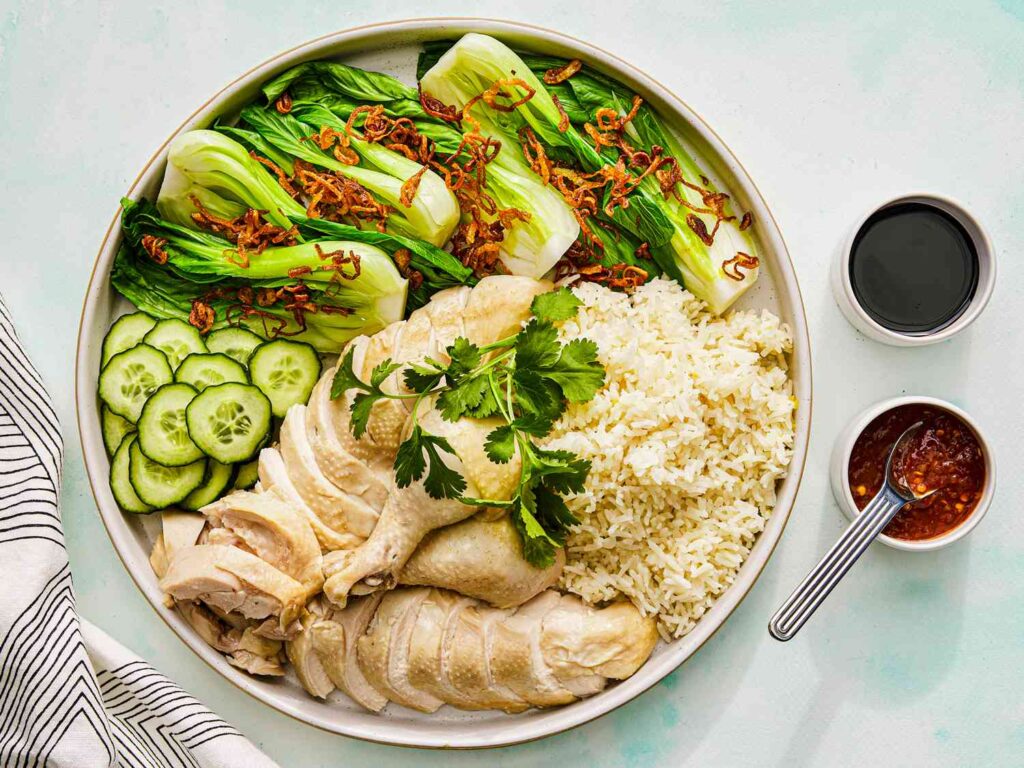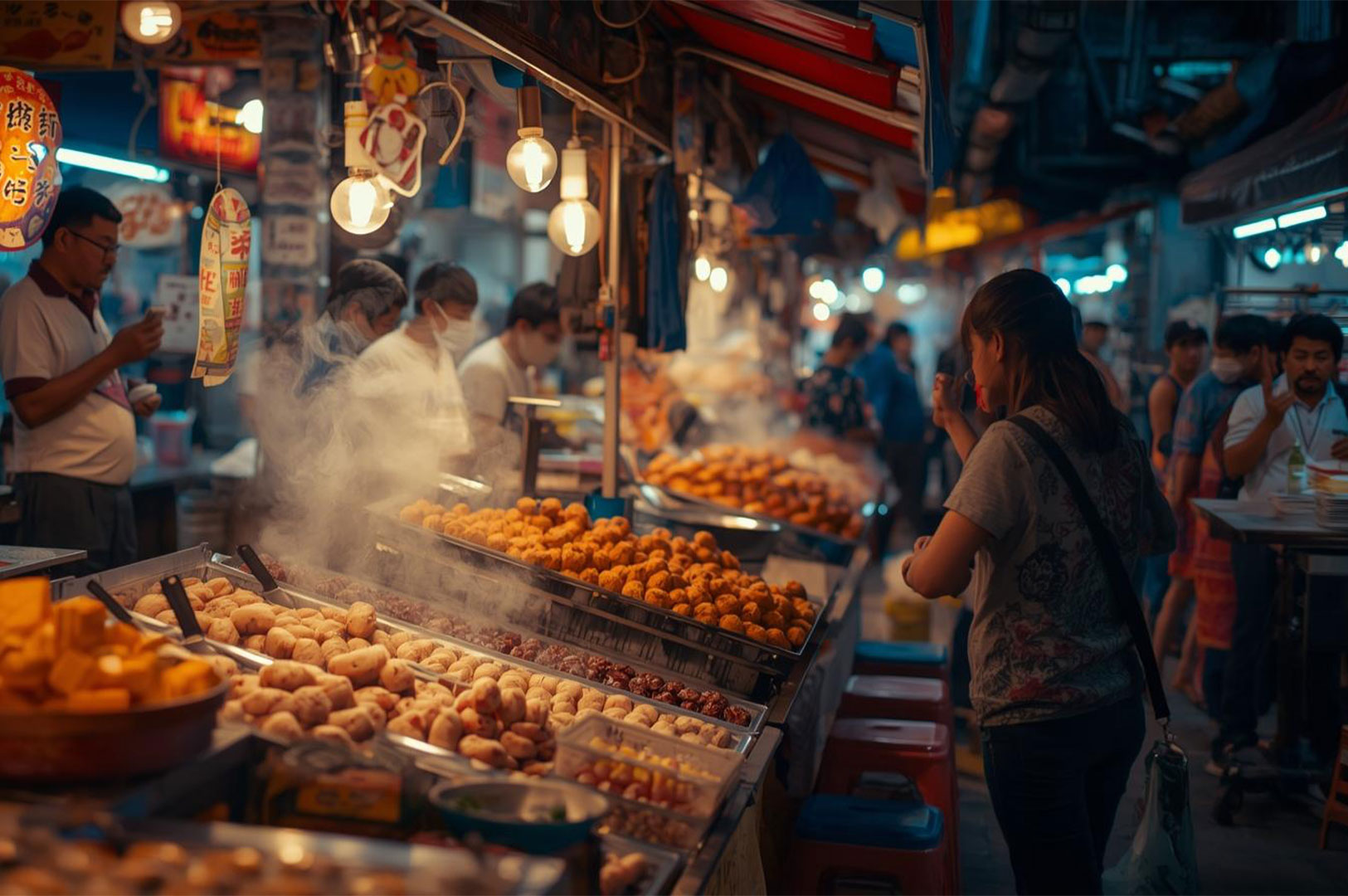Hainanese chicken rice Singapore style is a dish so ingrained in the culture that it’s often called the national dish of Singapore. Steeped in history and beloved across social divides, chicken rice defines Singaporean cuisine in both hawker centres and home kitchens. As a staple of Singapore’s hawker food culture, Hainanese chicken rice is celebrated for its authenticity and remains one of the most popular dishes found in hawker centres throughout the city.
In this blog, we’ll explore the fascinating journey of Hainanese chicken rice, what makes it unique, its powerful symbolism in Singapore’s multicultural society, and why you’ll find it on every food lover’s must-try list at famed food centres like Maxwell and Newton.
Hainan to Hawker Centre: Historical Origins
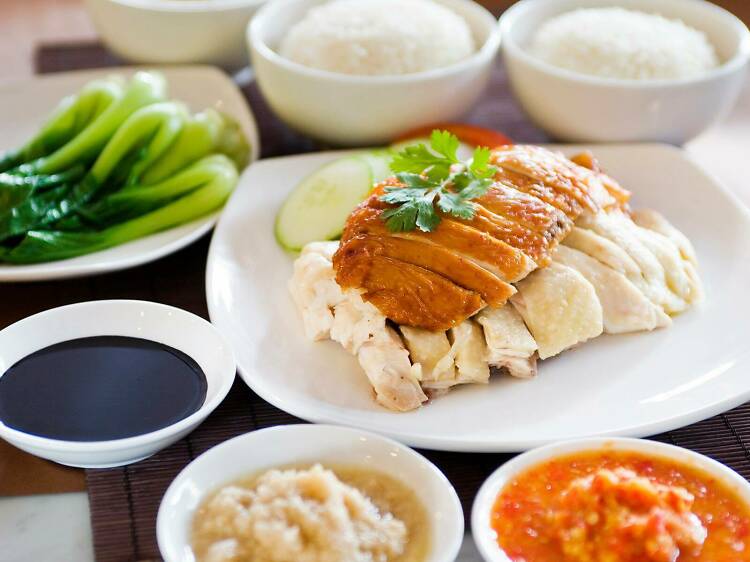
The roots of Hainanese chicken rice reach back to Hainan, China, where locals prized their distinctive Wenchang chicken—valued for its firm texture and flavorful skin. Hainanese cooks would poach this chicken and use its juices to prepare steamed rice, often served with dipping sauces made from local ingredients. Poached chicken and rice were traditionally eaten in Hainan, forming mainstays in Hainanese cuisine alongside rice flour and rice vermicelli dishes.
In the early twentieth century, Chinese immigrants from Hainan brought these recipes and traditions to the melting pot that was emerging Singapore.
The Ultimate Comfort Food: What Makes It Special
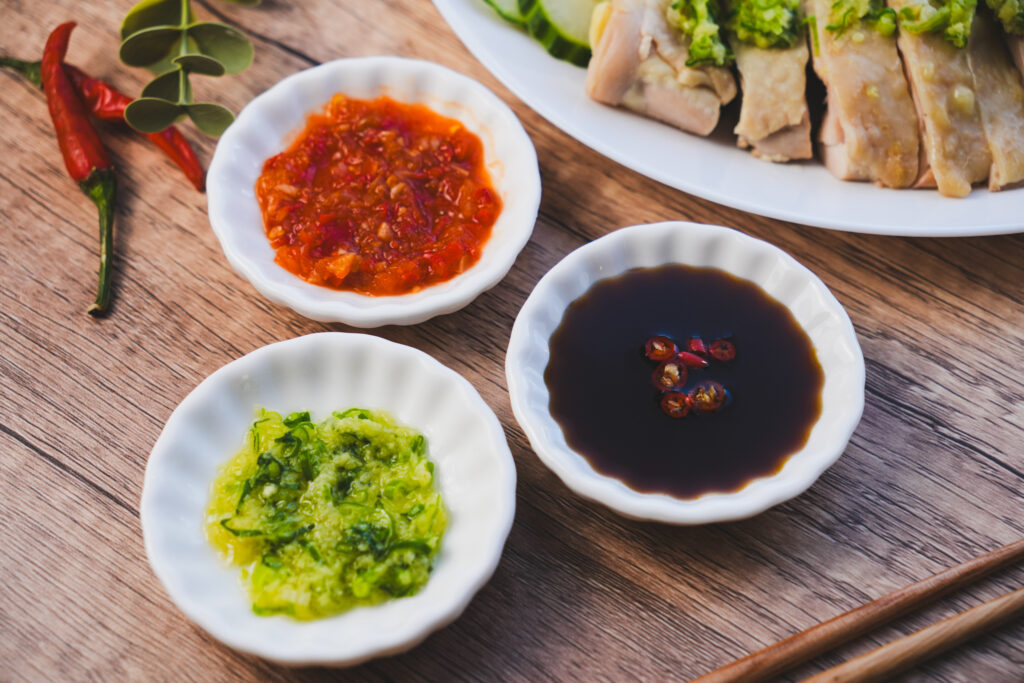
Ask any Singaporean, and they’ll tell you that chicken rice is not just a dish—it’s a whole experience, a harmonious combination of poached chicken, aromatic rice, robust sauces, and the unique energy of Singapore’s hawker culture.
The Chicken: Poached to Perfection
As tradition dictates, the chicken is poached gently in chicken broth, sometimes alongside ginger and spring onions, resulting in meat that is soft, juicy, and beautifully silky. In certain stalls, you might find the addition of sesame oil brushed onto the chicken for extra fragrance and sheen. And although less common, a deep fried chicken dish—deep fried for a crispy texture on the outside while remaining tender on the inside—can sometimes be found at food stalls catering to diverse tastes.
Fragrant Rice Cooked with Chicken Fat
Perhaps the greatest secret (and the best surprise) of Hainanese chicken rice is the rice itself. Unlike steamed white rice or simple fried rice served with other Singaporean dishes, this rice is a labor of love. Uncooked grains are first stir-fried with chicken fat, minced garlic, ginger, and sometimes a kaffir lime leaf or pandan for fragrance. The rice is then steamed in chicken stock until rich and flavorful, each grain distinct but fluffy.
The Trio of Dipping Sauces
True Singapore chicken rice is incomplete without its trio of essential condiments:
Chilli Sauce: A punchy blend of red chillies, garlic, ginger, lime, and sometimes a dollop of savoury sambal chili for that extra kick. This sauce is what most locals consider non-negotiable.
Ginger Paste: Fresh ginger, often mixed with scallions and a splash of sesame oil, pounded into a pungent paste that adds brightness to each mouthful.
Dark Soy Sauce: A syrupy, intense dark sauce with hints of caramel; it’s both sweet and savoury, traditionally drizzled over the chicken and rice. Some stalls will also offer light soy sauce for those who prefer a subtler touch.
In Singaporean hawker food culture, spicy peanut sauce is also a beloved condiment, especially served with satay, showcasing the variety of dipping sauces found at food centres.
Singapore’s Living Heritage: Cultural Significance
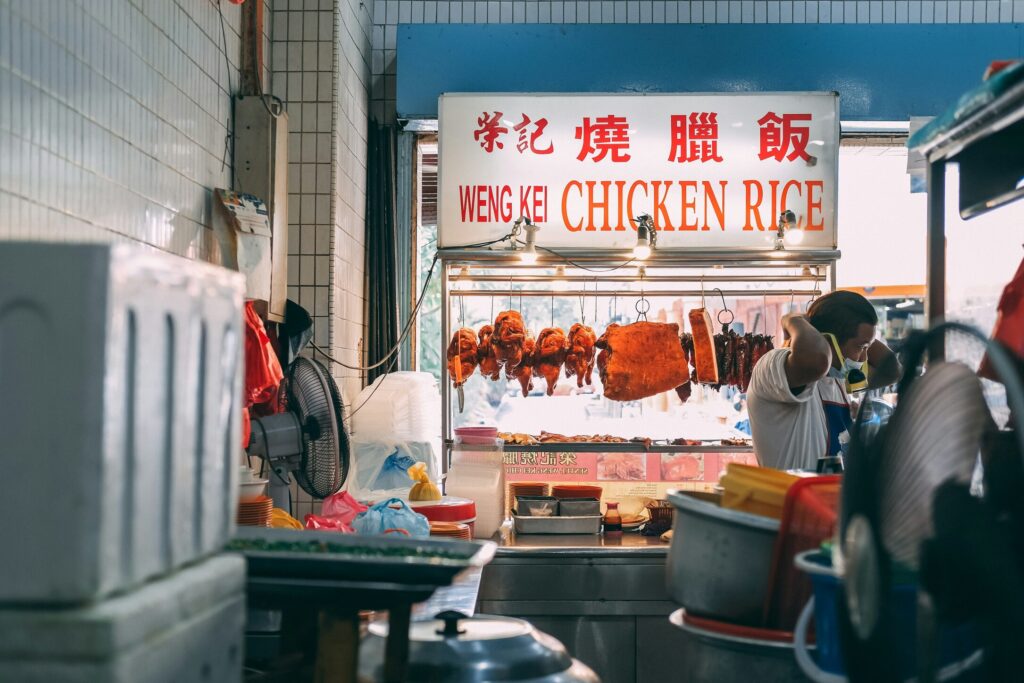
As a melting pot of cuisines—Chinese, Malay, Indian, Eurasian—Singaporean cuisine is defined by its diversity. Yet chicken rice is unique in its universal appeal, transcending ethnic lines in hawker centres and open air food courts all across the city.
Chicken rice is also a dish of celebration and comfort. Many families in Singapore reminisce about sharing a plate at their neighborhood hawker stall after school, or gathering around at festive periods—sometimes with extra add-ons like braised hard boiled eggs, fried bean curd, or preserved salted vegetables for something special.
Chicken chop or even duck rice may be offered alongside, and dishes featuring minced meat, such as Bak Chor Mee, are also popular choices at hawker centres.
Food Centre Rivalries and Chicken Rice Royalty
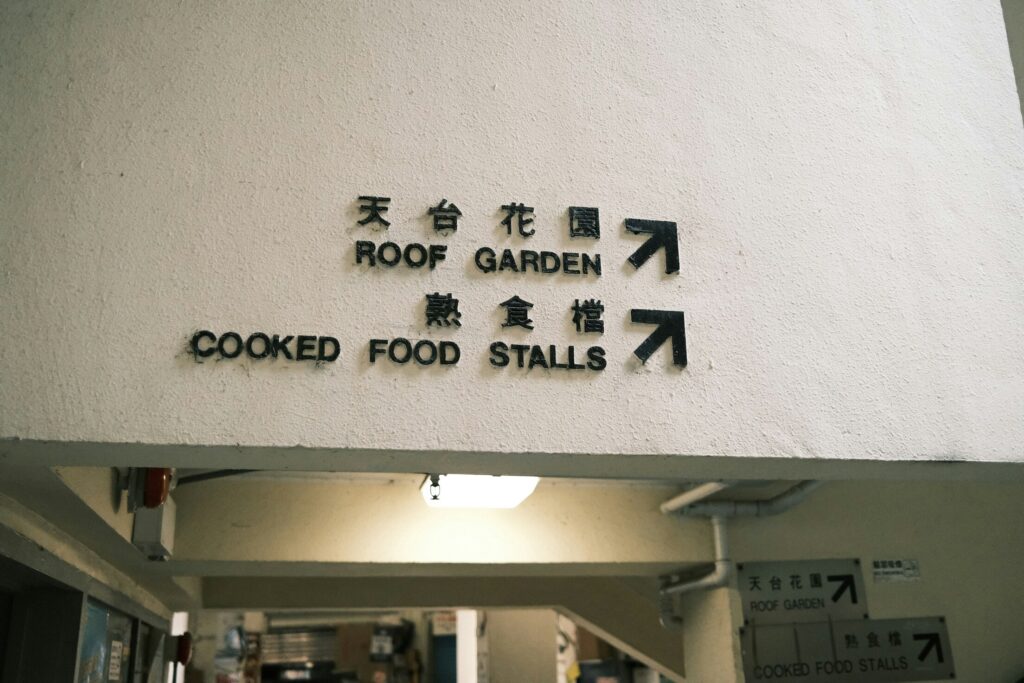
Where can you find the best Hainanese chicken rice Singapore has to offer? The answer is often fiercely debated, and it’s part of the fun.
Maxwell Food Centre’s Tian Tian Hainanese Chicken Rice achieved international fame after praise from Anthony Bourdain and a cooking challenge victory over Gordon Ramsay. Its rice has become the gold standard for texture and fragrance. Boon Tong Kee and various stalls at Newton Food Centre, Golden Mile Food Centre, and People’s Park Food Centre each have devoted fans, with crowds gathering for the unique approach each vendor brings: perhaps a more robust dark soy sauce, a zestier sambal, or an extra tender poached chicken.
You’ll also discover stalls offering fried chicken, steamed chicken, or even chicken that’s gently grilled for extra depth of flavor, served with accompaniments like shredded chicken, sweet sauce, or fried anchovies.
At some stalls, pork lard may enrich the rice, and sides like carrot cake, oyster omelette, or egg noodles can round out your hawker experience.
Beyond chicken rice, these food centres showcase the diversity of Singaporean hawker cuisine. At People’s Park Food Centre, you can find specialties like yong tau foo stuffed with fish paste, Bak Chor Mee topped with minced pork, and char kway teow featuring chinese sausage. Yellow egg noodles are a staple in many noodle dishes, while classic hawker fare includes comforting chicken curry, crispy pork chop, and a variety of other local favorites.
Variations on a Classic: Regional and Modern Twists
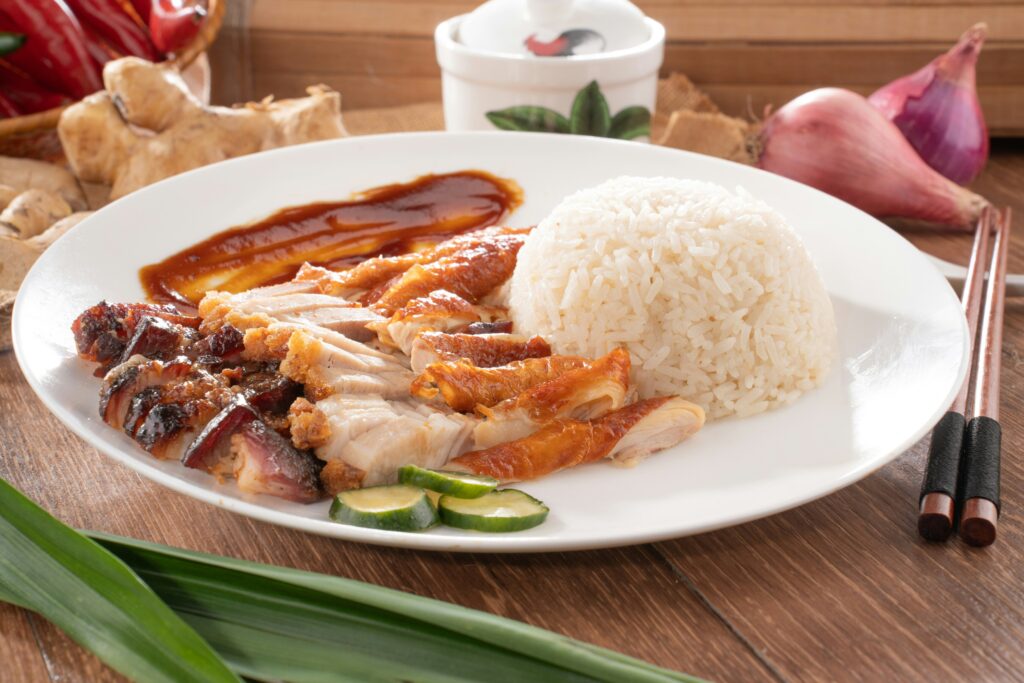
Singaporean cuisine is renowned for its adaptability, and chicken rice is no exception. Across the island, you’ll find regional and modern interpretations that put a fresh spin on this classic dish. Some hawker stalls might drizzle their chicken rice with a generous splash of dark soy sauce, adding a deep, caramelized note that complements the tender chicken. Others might enrich the rice with coconut milk, lending a subtle creaminess that sets their version apart from the traditional fragrant rice cooked in chicken broth.
Modern chefs are also experimenting with new techniques and ingredients. Sous vide poached chicken ensures perfect tenderness, while inventive spice blends or herb infusions give the dish a contemporary edge.
The Home Cook’s Guide: Making Chicken Rice Yourself
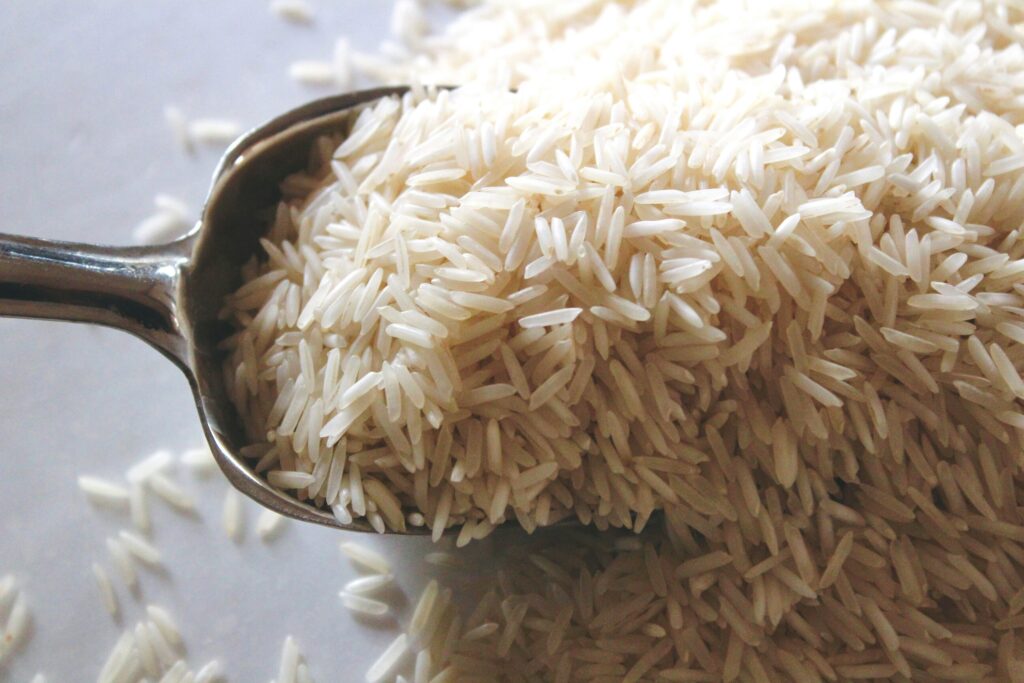
Ever wanted to recreate this iconic dish at home? You’ll need a whole chicken, chicken stock, aromatics like ginger and spring onions, and, for the rice, either jasmine or basmati rice. If you like experimenting, try using steamed rice cake or even making a side of rice vermicelli dish to give your meal a twist.
Begin by poaching the chicken in a flavorful broth enriched with ginger, garlic, and sometimes even pork bones for depth. An ice bath after cooking tightens the skin.
Next, fry your uncooked rice in chicken fat, adding aromatics and then simmering it all in the just-made chicken broth until each grain is separated and fragrant.
The sauces are equally important: blend chillies, garlic, and ginger with a squeeze of lime to create a vibrant chilli sauce.
Pound ginger and spring onions for the paste, and don’t overlook the balance of dark soy sauce and light soy sauce for garnishing.
Round out the meal with a bowl of clear chicken soup, perhaps complemented by preserved salted vegetables, hard boiled egg, or slices of fried bean curd.
For a side, consider stir fried greens or grilled meat, or add an order of sweet potatoes or baked beans for a family-style spread.
The Future of Chicken Rice: Trends and Sustainability

With more diners seeking nutritious options, some hawker stalls and restaurants are offering chicken rice made with brown rice or fragrant rice cooked with less chicken fat, while still preserving the signature flavors. Health-conscious versions might feature chicken broth that’s lower in sodium, or poached chicken sourced from organic or free-range farms.
Food centres and hawker stalls are increasingly mindful of their environmental impact, adopting eco-friendly packaging and working with suppliers who practice sustainable agriculture. Some are even exploring plant-based alternatives, such as tofu or tempeh.
As trends shift and technology advances, chicken rice remains a symbol of Singaporean resilience and creativity.
Why Chicken Rice Is Singapore’s National Dish
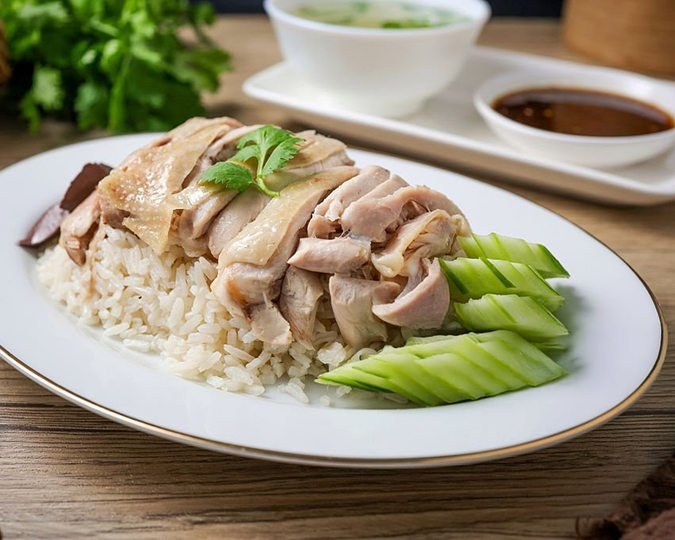
So, why has Hainanese chicken rice become Singapore’s national dish? The answer lies in its ability to unite and delight. Found everywhere, from Tiong Bahru Food Centre to open air food courts near suburban precincts, it weaves together heritage, adaptation, flavor, and simplicity—just like Singapore itself.
The next time you’re at a hawker centre, look for the long queue and follow the aroma of fragrant rice and simmering chicken broth. Take a seat, load your plate, and pour over your favorite sauce—whether that’s fiery chilli, dark soy, or both.
You’ll discover why, bite after bite, Hainanese chicken rice Singapore style continues to claim its crown as the beloved, unofficial national dish of a nation that lives and breathes food.

